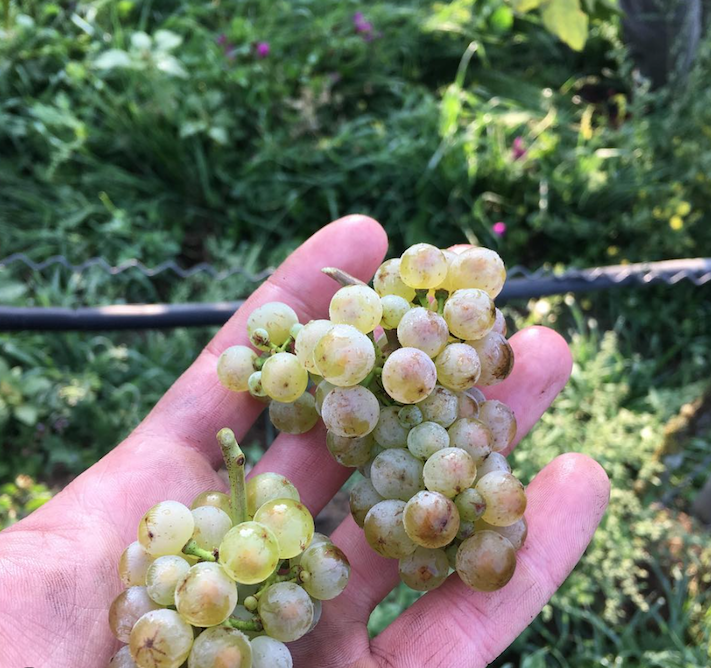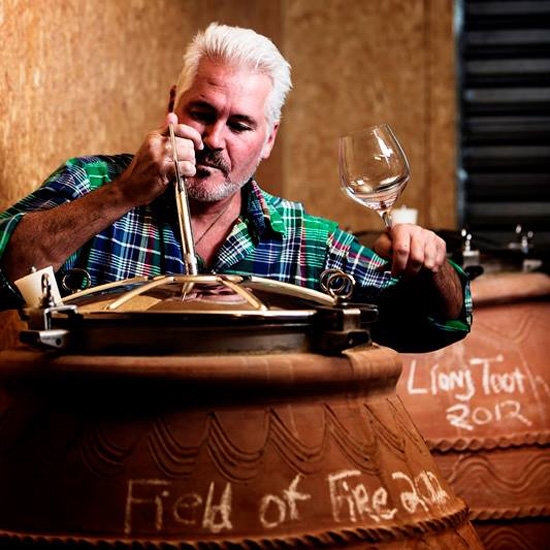
Over the decades wine styles have changed due to the application of modern (often industrial) farming techniques and also been radically altered by vinification methods designed to “clean up” the wine and manipulate it to accord to a specific flavour profile. Conforming to commercial and critical expectation by espousing clean winemaking is just one approach to winemaking, however. I normally cite Sauvignon as a grape that has been diluted by poor farming practice (chemical viticulture with grapes picked too early and with very high yields) and highly interventionist vinification (cultured – and flavoured – yeasts, temperature control, high sulphur regime, stopped malos) – no wonder it is difficult to discover examples that truly convey the sense of terroir and no wonder it is not perceived as a noble grape variety.
Riesling is another grape variety that has become a modern monoform. It is invariably subjected to high levels of added sulphites during the winemaking either to stop malo or to fix reduction. It is also often cold-stabilised and filtered. But, like any grape variety it can be handled differently. Why should there not be phenolic extraction (even skin maceration), or oxidative winemaking? The grapes, after all, possess the potential to yield an entirely different style of wine.
Think of a grape variety and you will probably envision it in its most basic iteration. Gamay? Think bubblegum and fruit pastilles. Malbec? Think chocolate. Chardonnay? Think warm buttered toast. In Jonathan Nossiters “Natural Resistance” the late Stefano Bellotti observed how the modern commercial culture of homogenisation (product profiling) was cramping the style of vignerons who truly wanted to reflect terroir and vintage and make authentic wines. Tasting panels were instrumental in imposing narrow standards and definitions so that the appellation might be easily recognised and calling that “typicity”, when typicity should instead connote the very opposite i.e. originality and singularity, a wine that is in and of itself. Not a varietal, and not a bland pan-regional commercial style.

Critique of true Riesling:
I recall Mike Weersing (owner and winemaker Pyramid Valley in north Canterbury) describing a Riesling panel that he was invited on to give his views of the grape. An Australian, a German and an Austrian winemaker were also on the panel. The Australian was adamant: Riesling must be clean skin, gently pressed, chilled and stabilised and cold fermented to preserve those fragrant varietal aromas and flavours. He stated: “Phenolics are just plain wrong in Riesling.” The Austrian vigneron murmured plaintively: “But I like phenolics in my wines.”
I prefer Rieslings that inhabit a fuzzy middle area of the taste spectrum. Not too light-bodied, nor too heavy or alcoholic, not too acid, just enough phenolics, not oaky, not tanky, not sweet and not austere, yet with sufficient tension.
As usual, the end product boils down to farming and winemaking strategies and choices. One logical assumption is that excellent organic farming methods and great terroir tend to produce better quality grapes with more material in them. The idea of just using the juice and discarding the skins and the stems of the grapes when they carry so much of the message of the vintage is counterintuitive, but white winemaking is predicated on the clean skin approach, akin to viewing winemaking as a form of polishing (as sake brewers do with rice), a kind of pulp f(r)action of discarding the outer layers to get to the delicate interior message.
Clean juice is naked and defenceless and generally requires numerous protections: temperature control, an anaerobic environment, perhaps the addition of enzymes, sulphite addition at various stages and filtration. A rougher alternative approach might be to use the very antioxidant material of the grapes (maceration or at least slow pressing, a portion of oxygen in the winemaking, longer ambient ferments, lengthy lees-ageing in oak or cement format, and allowing malolactic conversion, to give the wine breadth and strength and flavour resolution.
Of all the grape varieties the paradigm for Riesling is that it must be pretty, delicate, clean, crisp and linear. The zing of spring, if you like. The counter-argument is the cliched cheap Riesling style – thin, citric, reductive, a confection of pastilles and sulphur. But perhaps the most interesting examples have a further dimension and discover a balance between the tension that many of us admire desire and admire in Riesling combined with a more textural quality. If acidity still provides some of the spine, the body of these wines may also convey the richer golden fruit end of the spectrum allied to a savoury/spicy element. The more voluminous (in texture) wines from Alsace, for example, demonstrate Rieslings with natural strength supported by secondary notes of lees spice and oak (invariably large old barrels – small new oak vessels and Riesling do not make a happy marriage).
And what of the more Germanic style of Riesling? The German wine classification system emphasises standardisation and factual completeness and was first implemented by the German Wine Law of 1971. Nearly all of Germany’s vineyards are delineated and registered as one of approximately 2,600 Einzellagen (‘individual sites’), and the produce from any vineyard can be used to make German wine at any quality level, as long as the must weight of the grapes reaches the designated minimum level. As the current German system does not classify vineyards by quality, the measure of wine ’quality’ is the ripeness of the grapes alone. The quality of German Riesling has been viewed as the balance of ripeness and acidity. The move towards trocken (dry) style winemaking was more kow-towing to the popular preference for dry wines and the Prädikatswein measure is still by viewed by many as the truest reflection of the quality of Rieslings (in particular) in Germany. Appellation laws and regulations create perceptions that may have been relevant at a particular period, but over time may need to be rethought.
However much we yearn to do so, generalising about wine styles reflects more on our need for ineluctable truths and simplistic dualities. Preaching to the varietal is also so very reductive. The grape variety qua variety certainly has a signature but is just one component in a much larger picture. Farming and winemaking decisions ultimately have a greater impact on the final identity of the wine. Of course, if you want to make a standardised Riesling that consumers can easily recognise, then manipulate the juice in all the ways that help to create the appropriate taste profile. Or you can go down a different path and push the boundaries, such as working on the lees or under a veil of flor or with skin contact – the options are endless. Riesling is not some super-precious sacrosanct grape variety and those growers that seek to interpret it making it into a wine that does not conform to expectation, are simply expressing their vineyard, their vision and philosophy and their emotion.
I prefer Rieslings that inhabit a fuzzy middle area of the taste spectrum. Not too light-bodied, nor too heavy or alcoholic, not too acid, just enough phenolics, not oaky, not tanky, not sweet and not austere – yet with sufficient tension. Just so, in fact. Cue Riesling evangelists to roll their eyes and throw up their hands in horror!
*
Interested in finding out more about the Rieslings brought in by Les Caves de Pyrene? Contact us directly:
shop@lescaves.co.uk | sales@lescaves.co.uk | 01483 538820

